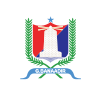
Back Mogadishu ACE Mogadisjoe Afrikaans ሞቃዲሾ Amharic Mogadixo AN Mogadiscū ANG مقديشو Arabic مقديشو ARZ Mogadixu AST Muqdisho AVK Moqadişo Azerbaijani
Mogadishu
مُقْدِشٗو (Wadaad) | |
|---|---|
 Clockwise from top: Mohammed Abdullah Hassan monument, Lido Beach, the Old Fishing Harbour, and Mosque of Islamic Solidarity. | |
| Nickname: Xamar | |
| Coordinates: 02°02′21″N 45°20′31″E / 2.03917°N 45.34194°E | |
| Country | |
| Region | Banaadir |
| Founded | 720AD[1] |
| Government | |
| • Mayor | Yusuf Hussein Jimaale |
| Area | |
| • Urban | 127 km2 (49 sq mi) |
| Population (2023)[3] | |
| • Urban | 2,610,483 |
| • Urban density | 21,000/km2 (53,000/sq mi) |
| Demonym | Maqdishawi or Hamarawi |
| Time zone | UTC+3 (EAT) |
| Climate | BSh |
| HDI (2019) | 0.701[4] average 1st |
| Website | bra |
Mogadishu (/ˌmɒɡəˈdiːʃuː, -ˈdɪʃ-/, also US: /ˌmoʊɡ-, ˌmɔːɡ-/;[5][6][7] Somali: Muqdisho, Wadaad: مُقْدِشو [mʉq'dɪ:ʃɔ] or Xamar, Wadaad: حَمَرْ [ħɑmɑr]; Arabic: مقديشو, Italian: Mogadiscio), locally known as Xamar or Hamar, is the capital and most populous city of Somalia. The city has served as an important port connecting traders across the Indian Ocean for millennia and has an estimated urban population of 2,610,483.[8]
Mogadishu is located in the coastal Banaadir region on the Indian Ocean, which, unlike other Somali regions, is considered a municipality rather than a maamul goboleed (federal state).[9]
Mogadishu has a long history, which ranges from the ancient period up until the present, serving as the capital of the Sultanate of Mogadishu in the 9th-13th century, which for many centuries controlled the Indian Ocean gold trade and eventually came under the Ajuran Sultanate in the 13th century which was an important player in the medieval Silk Road maritime trade. Mogadishu enjoyed the height of its prosperity during the 14th and 15th centuries[10] and was during the early modern period considered the wealthiest city on the East African coast, as well as the center of a thriving textile industry.[11] In the 17th century, Mogadishu and parts of southern Somalia fell under the Hiraab Imamate. In the 19th century, it came under the Sultanate of the Geledi's sphere of influence and the Abgal imams still held power within and outside of the city.
In 1894, the Somali chief had signed a treaty of peace, friendship, and protection with Filonardi of the Commercial Company of Benadir.[12][13][14] The onset of Italian colonialial rule occurred in stages, with treaties signed in the 1880s followed by economic engagement between Somali clans and the Commercial Company of Benadir, and then direct governance by the Italian Empire after 1906, British Military Administration of Somalia after World War II and the Trust Territory of Somaliland administered by Italy in the 1950s.
This was followed by independence in 1960, the Somali Democratic Republic era during Siad Barre's presidency (1969–1991), the three-decade Somali Civil War afterwards, and as of the late 2010s and 2020s a period of reconstruction.[15]
- ^ Insoll, Timothy (3 July 2003). The Archaeology of Islam in Sub-Saharan Africa. Cambridge University Press. p. 62. ISBN 9780521657020.
Conflicting dates as to the foundation of the city exists. I.M Lewis suggests that along with Brawa Mogadishu was founded in the tenth century. [...] However Jama discounts this tradition on the basis of epigraphic evidence, namely a tombstone of a woman which was found in Mogadishu that was dated to 720CE.
- ^ Cite error: The named reference
Dwuawas invoked but never defined (see the help page). - ^ "Mogadishu Population 2023". worldpopulationreview.com. Retrieved 19 January 2023.
- ^ "Sub-national HDI – Area Database – Global Data Lab". hdi.globaldatalab.org. Archived from the original on 23 September 2018. Retrieved 3 December 2020.
- ^ Upton, Clive; Kretzschmar, William A. Jr. (2017). The Routledge Dictionary of Pronunciation for Current English (2nd ed.). Routledge. p. 854. ISBN 978-1-138-12566-7.
- ^ "Mogadishu". The American Heritage Dictionary of the English Language (5th ed.). HarperCollins. Retrieved 19 August 2019.
- ^ "Mogadishu". Lexico UK English Dictionary. Oxford University Press. Archived from the original on 22 March 2020.
- ^ "Somalia". The World Factbook. CIA. Archived from the original on 1 July 2014. Retrieved 6 June 2021.
- ^ Akanni, O. F., et al. "Access to Agricultural Information among Rural Farmers–A Case of Ido Local Government Area Ibadan, Oyo State, Nigeria." International Journal of Environment, Agriculture and Biotechnology 5.6 (2019).
- ^ Lewis, I. M. (1999). A Pastoral Democracy: A Study of Pastoralism and Politics Among the Northern Somali of the Horn of Africa. James Currey Publishers. ISBN 978-0-85255-280-3. Archived from the original on 29 March 2022. Retrieved 6 November 2020.
- ^ Horn and Crescent Cultural Change and Traditional Islam on the East African Coast, by Randall L. Pouwels – Notes to Pages 37–40
- ^ Parlamento, Italy (1897). Atti Parlimentari. p. 234.
- ^ Robecchi Bricchetti, Luigi (1899). Somalia e Benadir viaggio di esplorazione nell'Africa orientale Prima traversata della Somalia compiuta per incarico della Societa geografica italiana. p. 522.
- ^ Sorrentino, Giorgio (1912). Ricordi del Benadir. p. 32.
- ^ Urbano, Annalisa. "A "Grandiose Future for Italian Somalia": Colonial Developmentalist Discourse, Agricultural Planning, and Forced Labor (1900–1940)." International Labor and Working-Class History 92 (2017): 69–88.
© MMXXIII Rich X Search. We shall prevail. All rights reserved. Rich X Search





